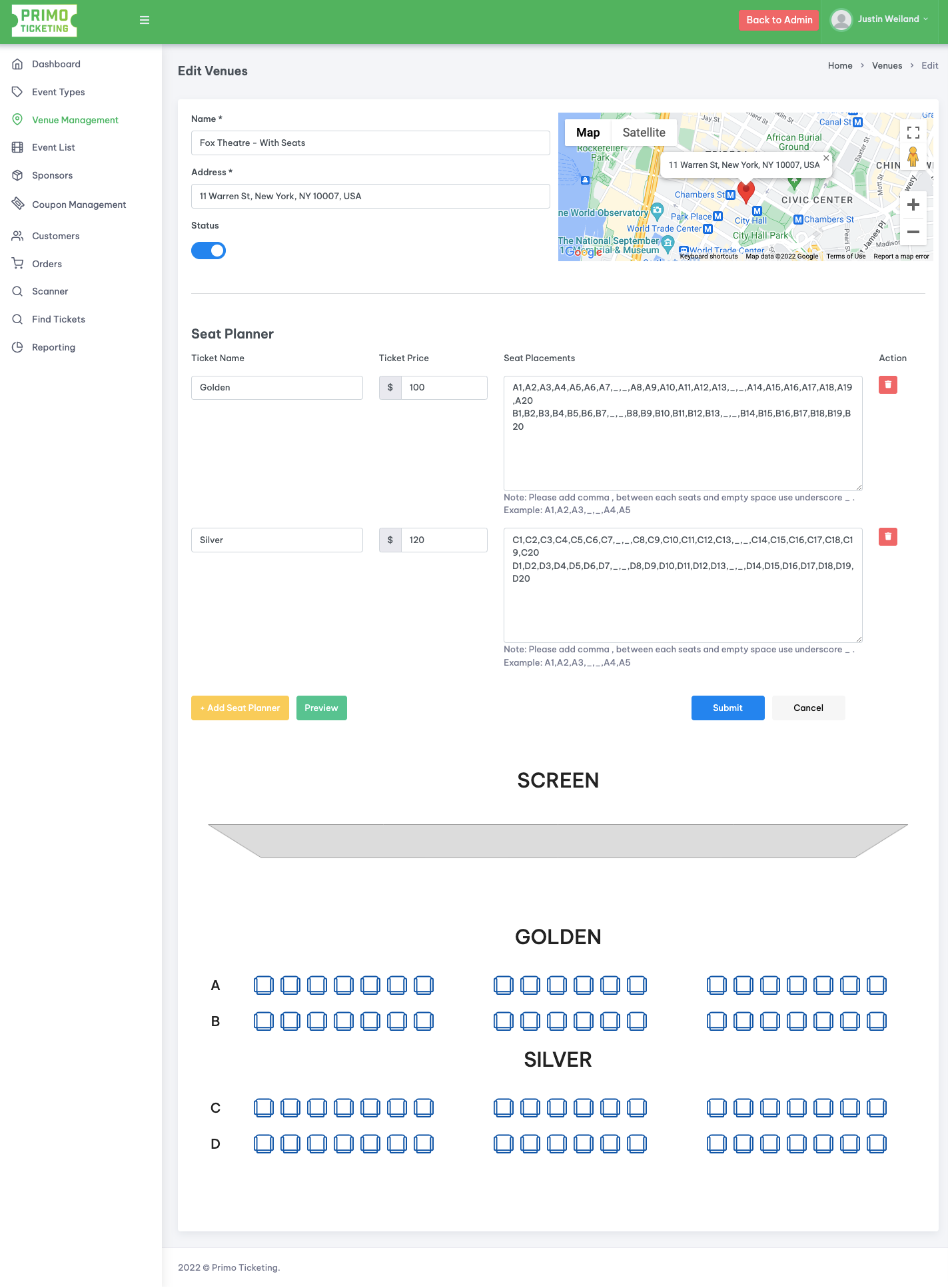
Project Name
PrimoTechnologies
JQuery, Laravel, MySQLVersion (original build)
Laravel Version 9.52.7Technologies
Overview
Primo Ticketing is a powerful event management and ticketing platform designed to enhance the efficiency of event organizers and provide attendees with a seamless experience. Leveraging a combination of Laravel for the backend functionality and a Laravel Blade template with jQuery for frontend presentation, Primo Ticketing offers a sophisticated and user-friendly solution for event management.
Clients have added their own events under their account. Two kinds of seat types are available on the website. General seats and reserved seating. General seats are for customers to purchase seats and be admitted to the general seating section at the event. Reserved seating is another type where they are able to select their respective seats for a specific section, row and seat for the event. All of the orders are managed in the backend.
All the tickets are scanned by using a scanner or entering the ticket code in the backend by the administrator to verify the customers' tickets.
- Event venue setup and management
- Custom seat chart creation
- Comprehensive reporting, including daily, weekly, and monthly reports
- Showcase of upcoming events
- Integration of First Data payment gateway for seamless transactions
- Display of sponsor logos and testimonials
- Google Maps display for the event locations
- QR Code scanner implementation for scanning tickets
What We Have Done
We have developed this project for both the user and admin side from scratch in Laravel & using a blade template with jquery. This comprehensive array of features and functionalities demonstrates Primo Ticketing's commitment to providing both organizers and customers with a state-of-the-art event management and ticketing experience. Through its user-centric approach and seamless integration of diverse technologies, Primo Ticketing is at the forefront of event management innovation.
Features we have done for the admin/client side:- Event creation and management.
- Event venue setup and management.
- Event listings and detailed previews.
- Sponsor and Coupon management.
- Custom seat chart creation.
- Customer management.
- Order (booked tickets) listings with a detailed view.
- Scanner management for ticket validation.
- Automated handling of unpaid tickets.
- Comprehensive reporting, including daily, weekly, and monthly reports.
- Generation of sales ticket reports in Excel format.
- Convenient transaction status check using ticket IDs
- User login and registration functionality
- Showcase of upcoming events on the client landing page
- Interactive seat chart display
- Smooth cart section and streamlined checkout
- Integration of First Data payment gateway for seamless transactions
- Easy ticket download and printing with QR code integration
- Display the sponsor logos on the tickets (PDF)
Code Snippets
Implemented a set of helper functions to facilitate code reusability and enhance the overall efficiency of operations. These functions have been designed to address various specific requirements within the codebase, thus promoting modular and maintainable programming practices.
Developed a dedicated functionality for converting hexadecimal color codes to their corresponding RGB values, particularly tailored for the context of QR code generation. This utility function accepts a hexadecimal color code as its input parameter and, in return, produces an array encapsulating the relevant RGB components. By offering this functionality, we ensure a standardized approach to color conversion while accommodating the specific needs of QR code rendering.
Furthermore, the aforementioned functions have a distinct emphasis on managing user roles and the associated access control mechanisms. The goal is to ascertain user privileges based on their respective roles within the system. The "isSuperadmin," "isSubadmin," and "isClient" functions have been meticulously crafted to determine the user's role and, consequently, enable the application to tailor its behavior according to the user's assigned permissions.
These functions play a pivotal role in regulating access to different features and functionalities within the application, thereby contributing to a more robust and secure user experience.
In essence, these enhancements serve to streamline code development, foster reusability, and reinforce the foundation of role-based access control, all while adhering to recognized principles of software engineering and providing a more user-centric approach.












